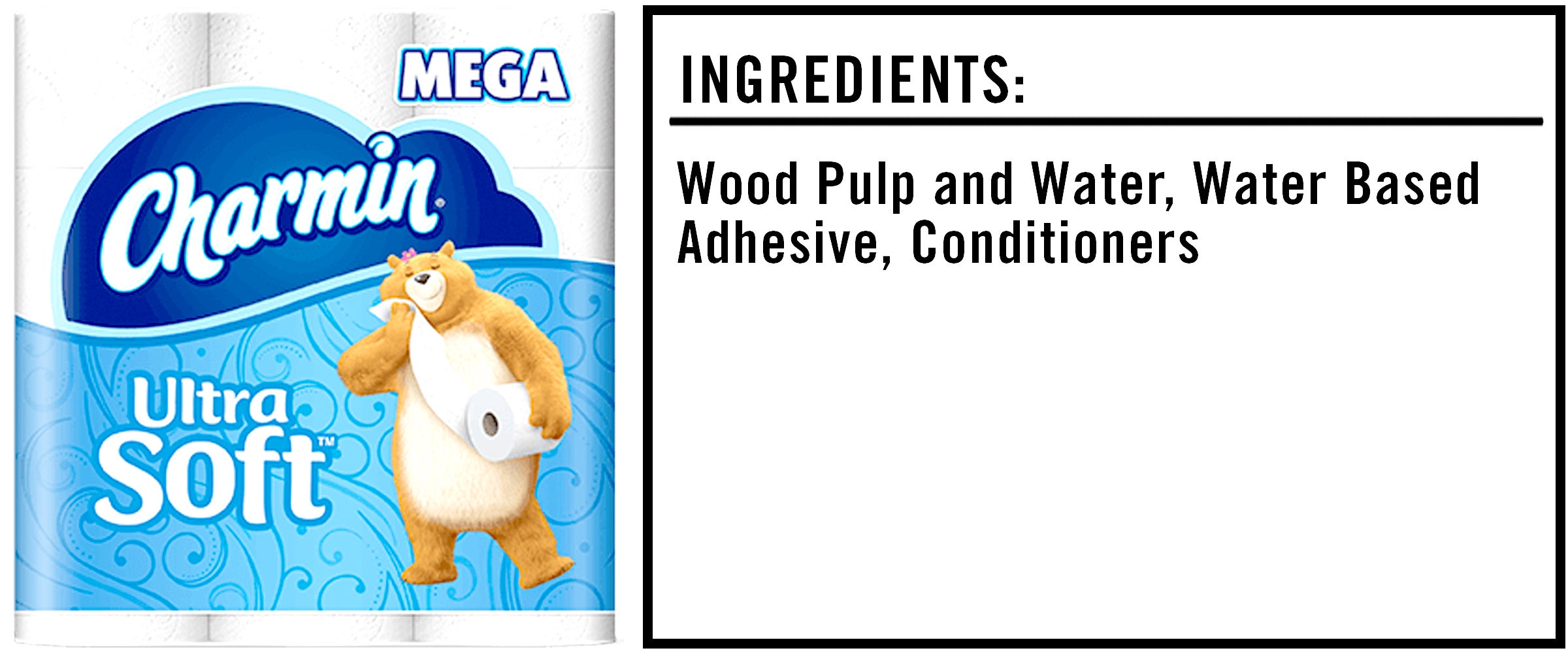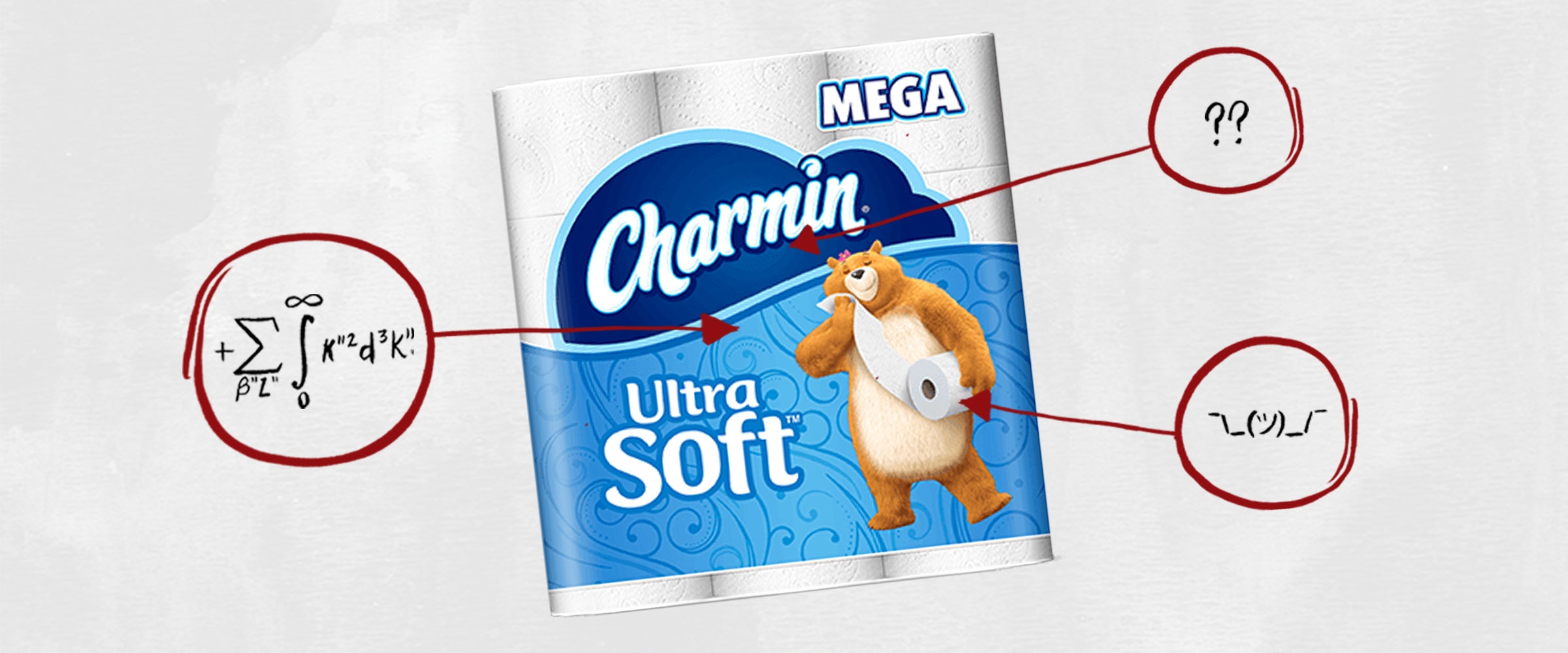We’re often told that you should never eat anything (or put anything on your body) if you don’t recognize everything on the ingredients list. But since most of us have no idea what xanthan gum or potassium benzoate are — or more importantly, what they’re doing to our bodies — we’re decoding the ingredients in the many things Americans put in (and on, or near) themselves.
This edition: Charmin Ultra Soft toilet paper, which is made from three separate ingredients (well, kinda) that we’ve broken down in the exact order they appear on their website. Toilet paper is, as you probably already know, valuable cargo right now, because coronavirus-spooked shoppers have been stockpiling it so they can take one billion shits while quarantined. So, now seems like as good a time as any to learn what’s really lurking in our prized ass paper.

The Ingredients
1) Wood Pulp and Water: Most toilet paper is made by combining wood pulp with water (and sometimes chemicals) to produce a kind of slurry, which can be cooked and carved into paper.
While that might seem straightforward and innocuous (except for the chemicals bit), there are a few things to consider when we talk about toilet paper. For starters, producing enough toilet paper to meet the needs of our asses — and coronavirus fears — places a major strain on the environment. As a 2019 report from the National Resources Defense Fund notes, “Industrial logging claims more than a million acres of boreal forest every year, equivalent to seven National Hockey League rinks each minute, in part to meet demand for tissue products in the United States.”
Then there are those chemicals I mentioned earlier. One of the most common chemicals added to toilet paper is chlorine, which helps bleach the product to remove the natural wood color. Unfortunately, the bleaching process can result in the forming of dioxins, highly toxic chemicals that can impede reproduction, development and your immune system — even through skin exposure. Thankfully, as Charmin notes on its website, “The pulp used in our products is elemental chlorine free,” which means they use an alternative bleaching agent thought to be less harmful.
There could be other chemicals in Charmin products, though. In a 2010 study, researchers concluded that toilet paper might be to blame for chronic irritation of the vulva in many women, because formaldehyde was being used to improve the strength of the toilet paper — and formaldehyde is a known carcinogen.
So, if anything, just be aware that pristine, white toilet paper has the capacity to contain chemicals that you might not want near your nethers.
2) Water Based Adhesive: As Charmin explains on its website, this “holds the 2-ply product together, the product to the cardboard core and keeps the end of the roll secure before the first use.” But that’s about as much detail as they provide, so it’s tough to say exactly what this adhesive is. What I can say, though, is that a lot of toilet papers, even recycled ones, contain BPA (or bisphenol), a chemical associated with all sorts of health issues — and adhesives could be one source, as well as the paper itself.
3) Conditioners: Again, Charmin is extremely vague about what these are, noting only that they’re “added to improve the overall experience of the product. For example, conditioners may improve softness or strength.” They could include formaldehyde, like I mentioned above, or any other combination of chemicals, really.
The Takeaway
As my colleague Tierney Finster wrote a while back, organic toilet papers made from the likes of bamboo are a healthier, more environmentally friendly alternative to the highly processed stuff we normally wipe our asses with. Better yet, join the growing group of people who are turning to bidets — a greener, cheaper and cleaner alternative to toilet paper — since toilet paper is in such high demand right now. Or, if you’re really desperate and refuse to use toilet paper after reading this article, maybe try a rock or some leaves.
Hey, whatever works.

